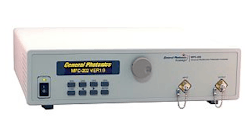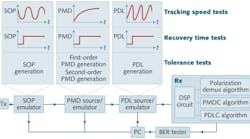Provides low-cost, high-performance solutions for polarization measurement/management and timing control. Applications include telecommunications, fiber-optic sensors, and optical coherence tomography. Major products include polarization controllers, scramblers, synthesizers, stabilizers, and more.
COMPANY OVERVIEW
COMPANY OVERVIEW
About General Photonics Corp
40
Contact
5228 Edison Ave
Chino, CA 91710
United States
http://www.generalphotonics.comChino, CA 91710
United States
909-590-5473
909-902-5536
More Info on General Photonics Corp
More Info on General Photonics Corp
Articles
Articles
Buyer's Guide Listing Information
Buyer's Guide Listing Information
Click here for listing information and directions on how to add or update your company.
Request More Information From General Photonics Corp
Request More Information From General Photonics Corp




